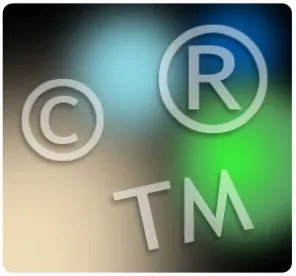On April 9, 2019, my IP colleagues Kerry Lee and Matt Jones published an informative post about using the ® and ™ trademark symbols – which are internationally used and recognized to signal trademark registration. As their post had a UK perspective, we thought it would be useful to provide a US perspective as well.
US trademark law is governed by the federal Lanham Act, 15 U.S.C. §§ 1051 et seq. The Lanham Act does not require notice of US trademark registration as a condition of trademark protection or continued registration. However, as Kerry’s and Matt’s article recognized, failure to use the trademark registration symbol or other notice after registration might limit a trademark owner’s rights – specifically, the right to obtain monetary damages from an infringer of a US-registered mark. A registrant would still be able to obtain injunctive relief and attorney’s fees in appropriate cases – but not monetary damages or a profits award for infringement that occurred before the infringer had actual notice of the registration.
Generally, a Lanham Act plaintiff can seek actual damages and the defendant’s profits as monetary damages for trademark infringement under Section 35(a) of the Lanham Act, 15 U.S.C. §1117(a). But failure to use the ® symbol with a registered trademark, or otherwise provide notice of registration, can limit those damages under Section 29 of the Lanham Act, 15 U.S.C. §1111..
Section 29 states that, in the absence of a registration notice (e.g., failure to use the ® symbol or other notice), monetary damages may be awarded for infringement of a registered mark only for infringements occurring after the infringer had actual notice of the trademark registration. Actual notice could be conveyed by, for example, a cease and desist letter or a trademark complaint or opposition notice sent to the infringer. Constructive notice due to the USPTO registration is not enough.
However, Section 29 applies only to registered trademarks. The Lanham Act does not require owners of common law (unregistered) marks to give prior notice of their claims of rights. Owners of common law trademarks can file infringement claims under Section 43(a) of the Lanham Act, 15 U.S.C. §1125(a). The panoply of Lanham Act remedies can be sought for infringement of a common law trademark, per Lanham Act Section 35(a), 15 U.S.C. §1117(a). Thus, monetary damages would still be available for infringement of a common law mark, although a defendant might claim lack of notice as a mitigating factor.
What notice should be given? Section 29 also prescribes certain forms of effective notice of a federal trademark registration: the ® symbol, the words “Registered in U.S. Patent and Trademark Office” or “Reg. U.S. Pat. & Tm. Off.” Unless a trademark is used with one of those traditional forms of notice, a plaintiff will have to provide evidence of actual notice. Needless to say, having to prove actual notice would add to litigation expenses.
The ® symbol should NOT, however, be used before a trademark registration issues. As stated in the USPTO Trademark Manual of Examining Procedure (TMEP), “Improper use of the federal registration symbol ® that is deliberate and intends to deceive or mislead the public or the USPTO is fraud.” TMEP §906.04. The USPTO will reject specimens of use that prematurely contain registration notices – unless a mark is already registered in another country. Unless the owner has a non-US trademark registration already, it is generally better to wait for the US registration to issue and then add the notice. Before the registration, the ™ symbol may be used to show consumers and others that you claim trademark rights.
As trademark registrations are valuable and should be trumpeted with pride, it is good practice to include the ® symbol after the trademark registers. That gives clear notice of the registration and protects the owner’s right to receive the benefit of all infringement remedies provided under the US Lanham Act, including monetary damages and the infringer’s profits. As Kerry Lee and Matt Jones observed, reviewing your trademark usage to make sure that the ® and ™ symbols are used correctly is an easy step to increase protection for your trademarks.




 />i
/>i

